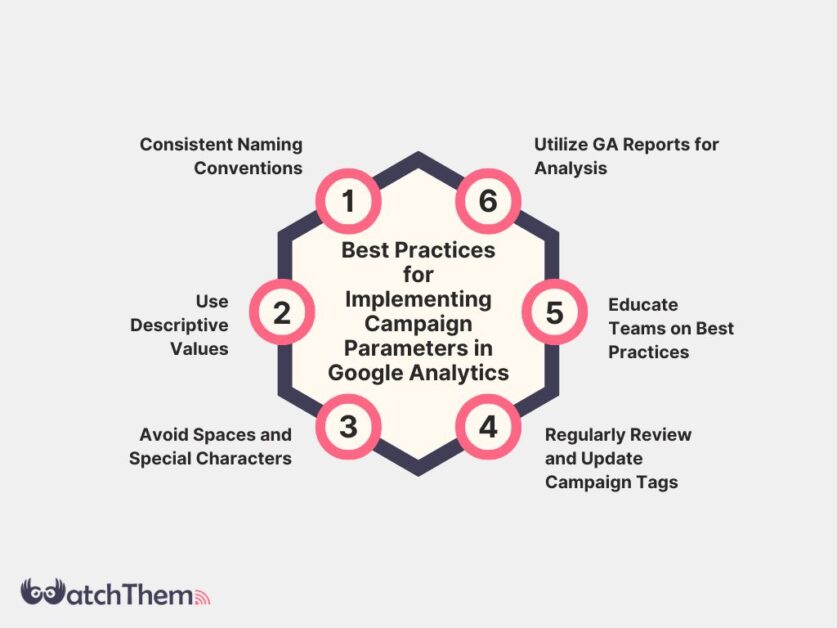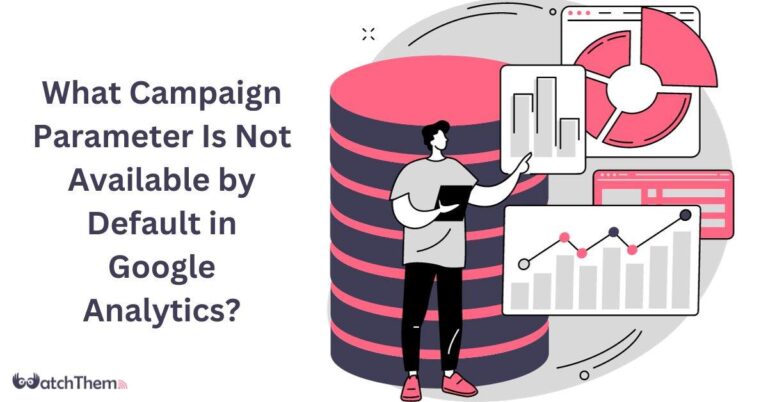Page Contents
Whether you’re preparing for the Google Analytics Individuals Qualification exam or using GA to analyze and keep track of your website performance, you might face a critical question: ‘What campaign parameter is not available by default in Google Analytics ?’
Google Analytics is a web analytics tool used by businesses, brands, and basically anyone who owns a website. It allows website owners to keep a close eye on different aspects of their domain, providing the necessary insight for optimization. However, like any other tool, it’s not without limitations.
In this guide, we’re going to elaborate on GA’s campaign parameters, explaining what campaign parameter is not available by default in Google Analytics. We’ll also introduce you to some of the best practices to use GA’s campaign parameters to make the most out of them.
Let’s start.
What Is a Campaign Parameter in Google Analytics
Before starting with important questions such as ‘What campaign parameter is not available by default in Google Analytics ?’, you need to learn some basic information.
In Google Analytics, a campaign parameter is a set of values added to the end of a URL that helps track the effectiveness of online marketing campaigns. These parameters are used to provide additional information about the source, medium, and other details of the traffic that comes to your website.
By appending these parameters to your URLs, Google Analytics can better categorize and report on the different sources of your website traffic.
Also Read: Google Analytics Cannot Collect Data From Which Systems by Default?
The common campaign parameters used in Google Analytics are:
- utm_source: This parameter identifies the source of the traffic, such as a search engine, newsletter, or other referral source.
- utm_medium: It defines the medium of the traffic, such as organic search, CPC (cost-per-click), email, etc.
- utm_campaign: This parameter specifies the name of the marketing campaign or promotion that you are tracking.
- utm_term: Used for paid search campaigns to identify the specific keyword that triggered the ad.
- utm_content: This parameter is often used for A/B testing and content-targeted ads. It allows you to differentiate between different versions or pieces of content.
- utm_id: Campaign ID used to identify a specific campaign or promotion, required for GA4 data import.
- utm_source_platform: Specifies the platform directing traffic to an Analytics property, such as Search Ads 360 or Display & Video 360.
When someone clicks on a URL with these parameters, the information is sent to Google Analytics, and the data is then processed and displayed in reports. This helps you analyze the performance of different marketing channels, campaigns, and sources, enabling you to make data-driven decisions to optimize your online marketing efforts.
For example, if you are running an email campaign and want to track how many users are coming to your website from that specific campaign, you would append the appropriate values to the URLs in your email, and Google Analytics would attribute the traffic accordingly.
What Campaign Parameter Is Not Available by Default in Google Analytics ?
The ‘Utm_adgroup‘ campaign parameter is not available in Google Analytics by default. Website owners typically add parameters to destination URLs to track and analyze which ad campaigns are responsible for driving traffic. However, ‘Utm_adgroup’ is not among the available campaign parameters in GA by default.
The absence of this parameter by default in Google Analytics underscores the importance of customization for in-depth campaign tracking, allowing website owners to optimize their website strategies based on detailed insights provided by the platform.
Now that you know what campaign parameter is not available by default in Google Analytics, it’s time to see how you can utilize these parameters to make data-driven decisions.
Best Practices for Implementing Campaign Parameters in Google Analytics
Implementing campaign parameters in Google Analytics requires careful planning and execution to ensure accurate tracking and insightful reporting. Here are some best practices to help you make the most out of GA’s campaign parameters:


#1 Consistent Naming Conventions
Maintain consistency in naming conventions for your campaign parameters. Whether it’s utm_source, utm_medium, or any other parameter, use a standardized format across all your campaigns. This consistency makes it easier to analyze data and compare performance over time.
#2 Use Descriptive Values
Choose descriptive and meaningful values for your campaign parameters. Clearly define the source, medium, campaign name, and other attributes to avoid confusion when reviewing reports. This will help you quickly understand the origins of your website traffic.
#3 Avoid Spaces and Special Characters
When assigning values to your campaign parameters, avoid spaces and special characters. Stick to alphanumeric characters and underscores to ensure compatibility and accurate data tracking. Spaces can lead to issues in URLs and may cause tracking errors.
#4 Regularly Review and Update Campaign Tags
Marketing strategies evolve, and so should your campaign parameters. Regularly review and update your campaign tags to reflect changes in your marketing efforts.
#5 Educate Teams on Best Practices
If multiple teams or individuals are involved in creating and managing campaigns, ensure that everyone is educated on the best practices for implementing campaign parameters. Consistent implementation across teams leads to better collaboration and more reliable data.
#6 Utilize GA Reports for Analysis
Take advantage of Google Analytics metrics and reports related to campaign parameters. The Acquisition and Campaigns reports provide valuable insights into the performance of different traffic sources, mediums, and campaigns. Use these reports to refine your marketing strategies.
Make sure to follow these practices to optimize your use of campaign parameters in Google Analytics. This will ensure accurate tracking, insightful reporting, and ultimately, improved decision-making for your online marketing efforts.
FAQs
In this article, we tried to answer an important question, which is ‘What campaign parameter is not available by default in Google Analytics?’ however, we understand that you might have some additional questions related to Google Analytics or other topics.
To provide you with more comprehensive information, here are some frequently asked questions:
Q1. What Is Not Considered a Default Source in Google Analytics?
In Google Analytics, an Email is not considered a source by default. In fact, it is considered a Medium, which is a category of sources.
Q2. What Happens If I Don’t Use Campaign Parameters in My URLs in Google Analytics?
If you don’t use campaign parameters in your URLs, Google Analytics may still track some basic information about your website traffic, such as the source and medium. However, the absence of specific campaign parameters makes it challenging to attribute traffic accurately to your marketing campaigns.
Utilizing campaign parameters provides detailed insights into the effectiveness of different campaigns, helping you make informed decisions to optimize your online marketing efforts.
What Campaign Parameter Is Not Available by Default in Google Analytics?: Final Words
In summary, the ‘Utm_adgroup’ campaign parameter is not available by default in Google Analytics. Customizing campaign parameters is crucial for in-depth tracking, allowing website owners to optimize strategies based on comprehensive insights.
To maximize the effectiveness of Google Analytics campaign parameters, follow best practices, and make sure to follow the practices we mentioned in this article. Understanding these aspects enhances your ability to make informed, data-driven decisions and optimize online marketing efforts.

